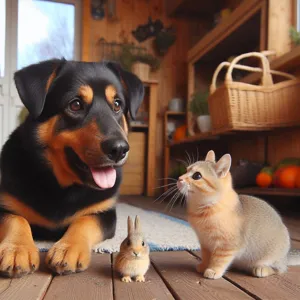For motorcycle enthusiasts, the thrill of the ride is unmatched, but safety always comes first.
One of the most crucial pieces of gear every rider should invest in is a quality pair of motorbike gloves. Designed to provide both grip and protection, the right gloves can enhance your riding experience while safeguarding your hands from the elements and potential accidents. With a dizzying array of options available on the market, it can be overwhelming to find the perfect pair that balances comfort, durability, and style. In this comprehensive guide, we will explore the top 10 motorbike gloves that not only offer superior grip for those sharp turns but also ensure your hands stay protected during every adventure. Whether you’re a seasoned rider or just starting out, these recommendations will help you make an informed choice, allowing you to hit the road with confidence and peace of mind.
1. Introduction to Motorbike Gloves: Why They Matter

When it comes to riding a motorcycle, safety and control are paramount, and motorbike gloves play a crucial role in ensuring both. While it might be tempting to view gloves as merely a stylish accessory to complement your riding gear, their importance cannot be overstated. Designed specifically for the unique demands of motorcycling, these gloves offer essential protection, grip, and comfort, making them a must-have for enthusiasts and casual riders alike.
Motorbike gloves are engineered to safeguard your hands during rides, shielding them from abrasions, impacts, and the elements. In the event of a fall, your hands instinctively reach out to break your fall, making them particularly vulnerable to injury. Quality gloves incorporate reinforced knuckles, padded palms, and durable materials to provide the necessary protection. Beyond safety, the right pair of gloves enhances your grip on the handlebars, allowing for better control and responsiveness, especially in challenging weather conditions.
Moreover, gloves serve as a barrier against the harsh realities of the road. Whether you’re navigating through heavy winds, unexpected rain, or the scorching sun, a good pair of motorbike gloves will keep your hands comfortable and dry. Breathable materials and ergonomic designs help regulate temperature and reduce fatigue, allowing you to focus on the ride rather than discomfort.
In this comprehensive guide, we will explore the top 10 motorbike gloves that combine ultimate grip and protection, ensuring that you can ride with confidence and style. Whether you’re a seasoned rider or just starting your journey, understanding the significance of motorbike gloves will empower you to make informed choices that enhance your riding experience. Buckle up and get ready to discover the best options for your next adventure on two wheels!
2. Key Features to Look for in Motorbike Gloves
When it comes to selecting the perfect motorbike gloves, understanding the key features that enhance grip and protection is essential. The right gloves can make a significant difference in your riding experience, providing not only comfort but also safety in challenging conditions. Here are the critical elements to consider:
**1. Material Quality:** The material of the gloves plays a crucial role in both grip and protection. Look for gloves made from high-quality leather or advanced synthetic materials. Leather is renowned for its durability and abrasion resistance, while synthetic options often feature breathable properties and weatherproofing.
**2. Grip Technology:** A good pair of motorbike gloves should have specialized grip features, such as silicone or rubberized sections on the palms and fingers. This enhances your hold on the handlebars, providing confidence in both wet and dry conditions. Some gloves also incorporate touchscreen compatibility, allowing you to use your devices without removing them.
**3. Padding and Protection:** Consider gloves that offer adequate padding, especially in high-impact areas such as the knuckles and palms. Look for CE-approved armor or reinforced layers that can absorb shock and prevent injuries during falls. The right padding can also enhance comfort for long rides.
**4. Fit and Flexibility:** Ensure the gloves fit snugly without being too tight, allowing for full range of motion. Many models come with adjustable wrist straps or closures to customize the fit. A flexible design will enable better dexterity, making it easier to operate controls and signals while riding.
**5. Weather Resistance:** Depending on your riding conditions, weather resistance can be a vital feature. Look for gloves that offer insulation for cooler rides, as well as waterproofing to keep your hands dry during rain. Ventilation is equally important for warmer climates, so consider gloves with breathable panels to maintain comfort.
**6. Reflective Elements:** Safety should always come first, and gloves with reflective materials or piping can enhance your visibility to other road users, especially in low-light conditions. This small detail can play a big role in keeping you safe on the road.
By focusing on these key features, you can find motorbike gloves that not only provide ultimate grip but also ensure your hands are well-protected during every ride. Whether you’re a seasoned rider or just starting out, investing in quality gloves will enhance your overall riding experience.
3. Importance of Grip and Protection for Riders

When it comes to motorbiking, the importance of grip and protection cannot be overstated. These two elements are crucial for ensuring a safe and enjoyable riding experience. Grip is paramount, as it directly impacts your control over the motorcycle. Whether you’re navigating sharp turns, accelerating on an open road, or coming to a sudden stop, the ability to maintain a firm hold on the handlebars is essential. The right gloves enhance your tactile feedback, allowing you to feel every nuance of the throttle and brake, which is vital for precision in handling.
Equally important is the aspect of protection. The open road can be unpredictable, and even the most experienced riders can encounter hazards that lead to falls or slips. High-quality motorbike gloves are designed with protective features such as reinforced knuckles, padded palms, and abrasion-resistant materials that can shield your hands in the event of an accident. This not only minimizes the risk of injury but also provides peace of mind, allowing you to focus on the thrill of the ride rather than worrying about potential dangers.
Moreover, a good pair of gloves balances grip and protection without compromising comfort. Riders often spend hours on the road, and having gloves that are breathable, flexible, and well-fitted can make a world of difference. Investing in gloves that prioritize both grip and protection is not just about enhancing performance; it’s about safeguarding your well-being and ensuring that every ride is as enjoyable as it is safe. As you explore the top motorbike gloves available, remember that the right choice can profoundly influence your riding experience, making grip and protection indispensable elements for any rider.
4. Overview of the Top 10 Motorbike Gloves
When it comes to selecting the perfect pair of motorbike gloves, the choices can be overwhelming. To simplify your decision-making process, we’ve curated a comprehensive overview of the top 10 motorbike gloves that combine ultimate grip, protection, and comfort. each glove featured in this guide has been meticulously tested for durability, flexibility, and safety features, ensuring that you can ride with confidence, no matter the conditions.
1. **Alpinestars GP Pro R3**: Renowned for their race-inspired design, these gloves offer exceptional grip and protection, featuring a combination of premium leather and advanced polymer reinforcements. The pre-curved finger design enhances dexterity while the hard-knuckle protection ensures your hands are shielded from impacts.
2. **Dainese Full metal 6**: A premium option for serious riders, these gloves boast a full-grain leather construction with carbon fiber knuckle armor and reinforced palm sliders. The ergonomics are tailored for a snug fit, providing both comfort and an unparalleled grip on the handlebars.
3. **Rev’It! Sand 4 H2O**: Perfect for adventure touring, these waterproof gloves feature a breathable design with a goat leather palm for excellent grip. The sand 4 h2o also includes knuckle protection and a visor wipe, making them a versatile choice for any journey.
4. **Icon Pursuit**: A blend of style and function, the Icon Pursuit gloves are made from a mix of leather and textile, ensuring comfort during long rides. The reinforced palm and knuckle armor provide essential protection without sacrificing flexibility.
5. **ScorpionEXO SG3**: Combining affordability with quality, the SG3 gloves feature a lightweight design with a combination of synthetic leather and mesh for breathability. The gloves also include padding in key areas for added protection, making them ideal for both street and sport riders.
6. **Held Air n Dry**: These innovative gloves are perfect for riders who encounter varied weather conditions. With a unique design that allows for two separate layers, you can easily switch between waterproof and breathable modes, ensuring comfort and grip in any situation.
7. **Spidi Race Wind Pro**: Designed for the track, these gloves provide maximum grip and protection with their abrasion-resistant leather and carbon fiber knuckle protection. The race fit ensures that your hands stay firmly in place while allowing for full mobility.
8. **BMW Rallye Pro**: For adventure riders, the BMW Rallye Pro gloves offer a perfect combination of comfort and protection. With a waterproof and breathable membrane, these gloves are built for long rides in diverse weather conditions, ensuring your grip remains firm.
9. **Fox Racing Dirtpaw**: Ideal for off-road enthusiasts, the Dirtpaw gloves feature a lightweight design with silicone grip fingertips for better control on the bike. Their padded knuckles and palms offer protection without sacrificing feel.
10. **RST Tractech Evo R**: These gloves are designed with the racer in mind, featuring a blend of leather and textile for durability. With reinforced areas and a snug fit, they provide excellent grip and protection during high-speed rides.
In this guide, we’ve highlighted the standout features of each glove, allowing you to choose the best fit for your riding style and preferences. Whether you’re a casual rider or a seasoned pro, the right pair of gloves can make all the difference in your overall riding experience.
5. 1. Brand and Model: Key Features and Reviews

When it comes to choosing the perfect motorbike gloves, understanding the brand and model is essential in ensuring you get the right grip and protection for your rides. This section will delve into some of the leading brands in the market, highlighting their standout features and user reviews to help you make an informed decision.
**1. Alpinestars SP-8 V2 Gloves**
Renowned for their superior craftsmanship, Alpinestars’ SP-8 V2 gloves offer a blend of comfort and protection. Made from premium leather, these gloves feature strategically placed padding and a reinforced palm for enhanced grip. Riders praise the SP-8 V2 for its excellent dexterity, allowing for effortless control of the bike’s clutch and throttle. Reviews often highlight the snug fit and stylish design, making them a popular choice among both casual riders and racing enthusiasts.
**2. Dainese 4 Stroke Gloves**
Dainese has long been synonymous with quality, and their 4 Stroke gloves are no exception. Designed with a focus on both protection and ventilation, these gloves are perfect for long rides in varying weather conditions. The combination of leather and mesh fabric ensures durability while keeping your hands cool. Riders appreciate the gloves’ ergonomic fit and the added safety features like carbon fiber knuckles, which have garnered positive reviews for their impact protection.
**3. Rev’It! Dirt 3 Gloves**
For off-road enthusiasts, the Rev’It! Dirt 3 gloves stand out with their lightweight construction and excellent grip. Equipped with a silicone print on the fingers for enhanced control, these gloves also feature a breathable mesh back that keeps your hands comfortable during hot rides. Users rave about the gloves’ flexibility, making them ideal for tackling challenging terrains. The Dirt 3 gloves have earned high marks for their durability and comfort level, solidifying their place in the off-road community.
**4. Scorpion EXO-100 Gloves**
Scorpion’s EXO-100 gloves are a favorite among sport riders looking for a balance of affordability and performance. With a unique combination of leather and textile materials, these gloves provide both flexibility and protection. The EXO-100 features reinforced palm sliders and a waterproof membrane, making them suitable for unpredictable weather. Riders often mention how the gloves mold to their hands over time, enhancing comfort and grip.
**5. Joe Rocket Velocity Gloves**
The Joe Rocket Velocity gloves are designed with the touring rider in mind. These gloves offer a mix of leather and textile, ensuring both protection and ventilation during long-distance rides. Users appreciate the gloves’ touchscreen compatibility, allowing for easy access to devices while on the go. With an array of adjustable features, the Velocity gloves have received positive feedback for their customizable fit and overall comfort during extended journeys.
By considering the key features and reviews of these top brands and models, you can narrow down your choices to find the perfect pair of motorbike gloves that meet your riding style and safety needs. Remember, the right gloves not only enhance your grip but also provide crucial protection, ensuring a safe and enjoyable ride every time.
6. 2. Brand and Model: Key Features and Reviews
When it comes to selecting the best motorbike gloves, the brand and model can significantly influence your experience on the road. Each brand brings its unique touch to the table, often incorporating specific technologies and materials that enhance grip, protection, and comfort. In this section, we’ll delve into some of the top brands, highlighting their standout models along with key features and customer reviews that can guide your purchasing decision.
**1. Alpinestars:** Renowned for their commitment to quality, Alpinestars offers gloves like the SP-8 V3. This model is crafted from premium leather and features strategically placed padding for superior protection. Reviewers rave about its snug fit and excellent dexterity, making it ideal for both sport and touring riders.
**2. Dainese:** The Dainese Full Metal 6 gloves are engineered for those who demand high performance. With a blend of leather and advanced materials, they offer unmatched protection without sacrificing comfort. Users have noted the gloves’ impressive grip, especially in wet conditions, and the feedback from long-distance riders is overwhelmingly positive, praising the breathability and flexibility.
**3. Rev’it!:** The Rev’it! Sand 4 gloves are perfect for adventure riders. These gloves are designed with a mix of textile and leather, providing both durability and flexibility. Customers appreciate the touchscreen compatibility and overall versatility, making them suitable for various riding conditions. Reviewers often mention how these gloves keep their hands cool during long rides in warm weather.
**4. Held:** Known for their innovative designs, Held’s Titan EVO gloves are a favorite among touring enthusiasts. Featuring a Gore-Tex membrane, these gloves are waterproof yet breathable, ensuring comfort in all weather conditions. Riders highlight the gloves’ ergonomic fit and the high level of protection offered, particularly with the carbon fiber knuckle guards.
**5. Icon:** For those who appreciate a blend of style and functionality, Icon’s Anthem gloves stand out. With bold designs and a focus on comfort, these gloves are constructed from durable materials that provide excellent grip. Customers love their unique aesthetic and often comment on how the gloves perform well in both casual and aggressive riding situations.
By understanding the key features and customer experiences associated with various brands and models, you can make an informed choice that aligns with your riding style and safety requirements. Remember, the right pair of gloves can make all the difference in your riding experience, providing you with the ultimate grip and protection when you need it most.
7. 3. Brand and Model: Key Features and Reviews

When it comes to choosing the perfect pair of motorbike gloves, the brand and model can significantly influence not only the overall performance but also the safety and comfort of your ride. In this section, we’ll delve into some of the leading brands in the market, highlighting their popular models and examining the key features that set them apart.
### Alpinestars SP Air Gloves
Alpinestars has established itself as a frontrunner in motorcycle gear, and the SP Air gloves are a testament to their commitment to quality. Designed with a blend of leather and mesh, these gloves offer exceptional breathability without compromising on protection. The innovative knuckle protection and finger sliders provide an extra layer of security during aggressive rides. Riders rave about the SP Air’s comfortable fit and the excellent grip they offer, allowing for precise control of the bike.
### Dainese Racing 3 Gloves
For those who prioritize both style and safety, the Dainese Racing 3 gloves are a perfect match. Constructed from high-quality leather, these gloves feature a unique Dainese patented safety system that enhances protection in critical areas. The gloves also incorporate a breathable liner, making them suitable for long rides in varying weather conditions. Reviewers often highlight the Racing 3’s sleek design and how the gloves mold to the hand over time, providing a custom fit that enhances grip and control.
### REV’IT! Sand 3 Gloves
If you’re an adventure rider, the REV’IT! Sand 3 gloves are a must-consider option. These gloves boast a multi-season design, featuring a waterproof and breathable membrane that keeps hands dry during unexpected downpours. With reinforced palms and finger protection, they ensure maximum grip and durability, whether you’re navigating city streets or tackling off-road trails. Users frequently commend the Sand 3 gloves for their versatility, comfort, and effective ventilation, making them ideal for various riding conditions.
### Icon Anthem Gloves
For riders looking for a more urban aesthetic, the Icon Anthem gloves offer a blend of style and functionality. These gloves are made from a combination of textile and leather, providing a lightweight feel while still delivering adequate protection. The high-visibility detailing and touch-screen compatibility are standout features that cater to today’s tech-savvy riders. Many reviews highlight the Anthem gloves’ affordability without sacrificing quality, making them an attractive choice for both new and experienced riders.
### Held Air N Dry Gloves
For those who ride in fluctuating climates, the Held Air N Dry gloves are a game-changer. These innovative gloves feature a unique two-in-one design, allowing riders to switch between warm and cool configurations. With a waterproof membrane and strategically placed ventilation, they keep hands comfortable in both hot and wet conditions. Reviewers are particularly impressed by the gloves’ ergonomic fit and the excellent tactile feedback they provide, making it easier to operate controls without sacrificing safety.
### Conclusion
Choosing the right brand and model of motorbike gloves can greatly enhance your riding experience. By understanding the key features and reading reviews from fellow riders, you can make an informed decision that prioritizes both grip and protection. Each of these brands offers unique advantages, ensuring there’s a perfect pair of gloves tailored to your riding style and needs.
8. 4. Brand and Model: Key Features and Reviews
When it comes to selecting the perfect motorbike gloves, the brand and model play a pivotal role in determining the quality, comfort, and overall performance. In this section, we’ll delve into some of the top brands in the market, highlighting their key features and customer reviews to help you make an informed choice.
**Dainese Druid 3 Leather Gloves**: Known for their exceptional craftsmanship, Dainese gloves offer a blend of style and protection. The Druid 3 model is made of high-quality leather with a reinforced palm for superior grip. Customers rave about the fit and feel, with many noting that the gloves provide excellent dexterity without compromising safety. The carbon fiber knuckles add an extra layer of protection while maintaining a sleek design.
**Alpinestars GP Pro R3 Gloves**: Alpinestars is a brand synonymous with performance, and the GP Pro R3 gloves are no exception. Engineered for track enthusiasts, these gloves feature a combination of leather and advanced textile materials for enhanced durability. The gloves come equipped with a unique finger bridge that prevents finger separation during a fall. Users frequently praise the ventilation system that keeps hands cool during long rides, making them ideal for warm weather.
**Rev’It! Xena 2 Gloves**: For riders seeking a stylish yet functional option, the Rev’It! Xena 2 gloves are a fantastic choice. Made from a combination of goatskin leather and PWR shell fabric, they offer both comfort and protection. The gloves are equipped with hard-shell knuckles and a visor wiper for added convenience. Customers appreciate the elegant design that does not sacrifice safety, making these gloves suitable for both casual and aggressive riding.
**Icon Super Duty 4 Gloves**: If you’re looking for a tough and rugged option, the Icon Super Duty 4 gloves are built to last. Made from durable textile materials, these gloves come with a padded palm for added grip and comfort. They feature a unique adjustable cuff for a secure fit, ensuring that no debris enters the gloves during your ride. Riders love the bold design and the versatility of these gloves, making them suitable for various riding styles, from urban commuting to off-road adventures.
In conclusion, the brand and model of motorbike gloves are crucial factors influencing your riding experience. By considering the key features and customer reviews of these top contenders, you can find the perfect pair that balances grip, protection, and comfort, allowing you to ride with confidence.
9. 5. Brand and Model: Key Features and Reviews
When it comes to selecting the perfect motorbike gloves, understanding the brand and model is paramount. Each manufacturer brings its unique blend of innovation, style, and protection to the table, making informed choices crucial for riders. In this section, we’ll delve into some top brands and their standout models, highlighting key features and customer reviews that can guide your decision-making process.
**1. Alpinestars SP-8 V3**
Renowned for their cutting-edge technology, Alpinestars has consistently delivered high-quality gear. The SP-8 V3 model boasts a full-grain leather construction for durability, combined with strategically placed stretch panels for flexibility. Riders rave about the gloves’ excellent fit and comfort, complemented by advanced knuckle protection and a touchscreen-compatible thumb.
**2. Dainese 4 Stroke Evo**
Dainese is synonymous with premium motorcycle apparel, and the 4 Stroke Evo gloves exemplify this reputation. Engineered with a mix of leather and textile, these gloves provide exceptional breathability without compromising safety. Customers frequently highlight the gloves’ superb grip and the innovative Dainese smart touch technology, allowing seamless use of smartphones and navigation devices.
**3. Rev’it! Sand 3**
For adventure seekers, the Rev’it! Sand 3 gloves are a game-changer. This model features a unique combination of leather and textile, offering both protection and airflow. Riders appreciate the reinforced palm and knuckle areas, which provide confidence while navigating challenging terrains. Reviews often mention the gloves’ comfort during long rides, making them a favorite among touring enthusiasts.
**4. Held Phantom 2**
Held has long been a trusted name in the motorcycle gear industry, and the Phantom 2 gloves showcase their commitment to safety and performance. Constructed from kangaroo leather, these gloves are not only lightweight but also incredibly strong. Riders frequently commend the gloves’ ergonomic design and the exceptional tactile feedback they provide, which enhances handling and control.
**5. Icon Pursuit**
For those who prefer a more urban aesthetic, the Icon Pursuit gloves are a stylish option that doesn’t skimp on protection. With a sleek design and a mix of leather and textile, these gloves are designed for both form and function. Customers have noted the gloves’ comfortable fit and the level of protection they offer during daily rides, making them a popular choice for city commuters.
By evaluating these brands and models based on their key features and user experiences, riders can make informed decisions that align with their individual needs and preferences. Remember, the right pair of gloves can significantly enhance your riding experience, ensuring both safety and comfort as you hit the road.
10. 6. Brand and Model: Key Features and Reviews
When it comes to selecting the ideal motorbike gloves, understanding the brand and model is essential in ensuring you choose a pair that offers both superior grip and protection. In this section, we delve into some of the most reputable brands in the market, highlighting their standout features and user reviews to help you make an informed decision.
### Alpinestars
Renowned for their innovative designs and high-quality materials, Alpinestars gloves consistently receive praise for their durability and performance. For instance, the Alpinestars SP-8 V2 gloves feature reinforced palm sliders and a multi-panel construction that enhances grip and comfort, making them a favorite among both casual riders and seasoned professionals. Customers rave about their snug fit and the tactile feel they provide, allowing for precise control while riding.
### Dainese
Dainese has long been synonymous with premium motorcycle gear, and their gloves are no exception. The Dainese Full Metal 6 gloves boast an impressive array of protective features, including carbon fiber knuckles and a refined leather exterior that offers excellent abrasion resistance. Riders appreciate the balance of protection and flexibility, making these gloves suitable for both track and street use. Reviews often highlight the attention to detail in the stitching and overall craftsmanship, showcasing Dainese’s commitment to quality.
### REV’IT!
For those seeking a blend of style and functionality, REV’IT! gloves stand out with their modern designs and advanced materials. The REV’IT! Jerez 3 gloves, for example, are crafted with a combination of goat leather and technical textile, providing both comfort and excellent grip. Users have noted the gloves’ impressive ventilation, making them ideal for warmer weather without compromising on safety. Many riders appreciate the gloves’ sleek look and how they seamlessly integrate with various riding jackets.
### ICON
If you’re looking for gloves that offer bold styles alongside reliable protection, ICON is a brand worth considering. The ICON Anthem gloves, known for their rugged aesthetics and high-performance features, provide excellent grip thanks to their silicone finger grips and reinforced palm. Riders love the versatility of these gloves, which are suitable for a range of riding conditions. Reviews often mention the gloves’ ability to withstand wear while maintaining a comfortable fit throughout long rides.
### Scorpion EXO
Scorpion EXO is another brand that has garnered a loyal following, especially among adventure and touring riders. The Scorpion EXO-280 gloves are crafted with a waterproof membrane and thermal insulation, making them perfect for varying weather conditions. Users frequently commend the gloves for their impressive grip, even in wet conditions, as well as their ergonomic design that promotes natural hand movement. Reviews highlight the value for money, as these gloves provide both comfort and protection without breaking the bank.
### Conclusion
Choosing the right motorbike gloves is crucial for ensuring a safe and enjoyable riding experience. By considering the key features and user reviews associated with each brand and model, you can find gloves that not only enhance grip and protection but also match your personal style and riding preferences. Whether you prioritize durability, ventilation, or aesthetics, there’s a perfect pair of gloves out there waiting for you!
11. 7. Brand and Model: Key Features and Reviews
When it comes to choosing the perfect motorbike gloves, the brand and model play a pivotal role in ensuring you get a product that meets both safety standards and personal preferences. Renowned manufacturers often incorporate cutting-edge technology and materials into their designs, providing riders with better grip, increased comfort, and enhanced protection. Below, we delve into some of the standout brands and their key models, highlighting features that set them apart and reviewing user experiences.
**1. Alpinestars SP-8 V3:** Known for their exceptional fit and comfort, the SP-8 V3 gloves are crafted from premium leather, ensuring both durability and a soft touch. The gloves feature advanced protection in the knuckle area and reinforced palm sliders, making them ideal for sport and street riding. Riders rave about their snug fit and excellent tactile feedback, allowing for precise control over throttle and brakes.
**2. Dainese 4-Stroke Evo:** These gloves are a testament to Dainese’s commitment to safety and style. Made with a combination of leather and synthetic materials, they offer excellent abrasion resistance. Their ergonomic design, complete with a breathable lining, keeps hands cool during long rides. Customers appreciate the lightweight feel and the integrated hard knuckle protection, which doesn’t compromise on flexibility.
**3. Fox Racing Dirtpaw:** For off-road enthusiasts, the Dirtpaw gloves are a favorite. They feature a padded palm and silicone grip for optimal control while navigating rugged terrain. The flexible design and reinforced fingers make these gloves both comfortable and protective. Users love the grip they provide on the handlebars, ensuring a confident ride, even in challenging conditions.
**4. Rev’It! Dirt 3:** These gloves combine ruggedness with versatility, making them suitable for various riding styles. They boast a waterproof membrane and thermal insulation, perfect for colder weather. Riders have noted how these gloves offer a great balance of warmth without sacrificing dexterity, allowing for easy manipulation of controls.
**5. Icon Anthem:** With a striking design and a reputation for quality, the Anthem gloves are made from durable materials that withstand the rigors of riding. Their unique feature is the touchscreen compatibility, allowing riders to use their devices without removing their gloves. Customers love the bold aesthetic and the comfort level they provide for both short trips and long hauls.
**6. Held Air N Dry:** For those who face changing weather conditions, the Held Air N Dry gloves are a game-changer. These gloves feature a unique dual-chamber system, allowing riders to easily switch between waterproof and ventilated modes. Users rave about their versatility and the peace of mind that comes with knowing they are protected in any weather.
**7. ScorpionEXO SG3:** These gloves offer an excellent blend of protection and comfort with their hard knuckle protection and reinforced palm. The use of breathable materials ensures that hands stay cool during rides. Reviewers highlight the great fit and feel, making them a popular choice for both casual and competitive riders.
In summary, the right brand and model can significantly enhance your riding experience. By considering key features such as material quality, protective elements, and user reviews, you can make an informed decision that ensures your comfort and safety on the road. Whether you prioritize grip, warmth, or style, there is a perfect pair of gloves out there waiting for you.
12. 8. Brand and Model: Key Features and Reviews
When it comes to choosing the perfect motorbike gloves, understanding the brand and model is crucial for ensuring you find a pair that meets your specific needs. Each manufacturer offers unique features designed to enhance grip, comfort, and protection, making it essential to dive into the details of these products. Here, we outline the standout attributes of some top brands and models in the market, along with user reviews that highlight real-world experiences.
1. **Alpinestars SP-8 V2**: These gloves are revered for their blend of protection and comfort. Featuring a combination of leather and synthetic materials, the SP-8 V2 offers excellent abrasion resistance. The reinforced knuckles and palm sliders provide an added layer of safety without compromising flexibility. Riders rave about the gloves’ snug fit and tactile feedback, making them perfect for both street and sport riding.
2. **Dainese WR-WP**: Designed for those who brave the elements, the WR-WP gloves are waterproof and insulated, perfect for long rides in unpredictable weather. The gloves feature a soft, durable outer shell and a pre-curved fit that enhances comfort during extended use. Users have praised their warmth and dexterity, with many noting they retain good grip even in wet conditions.
3. **Rev’It! Dirt Series**: For off-road enthusiasts, the Rev’It! Dirt Series offers exceptional grip and protection. With a reinforced palm and hard knuckle protection, these gloves are built to withstand the rigors of adventure riding. Riders appreciate the breathability of the materials, which keep hands cool during intense rides, while the adjustable closure ensures a secure fit.
4. **Fox Racing Dirtpaw**: A favorite among motocross riders, the Dirtpaw gloves are lightweight and flexible, allowing for maximum control. The padded palm provides extra comfort on longer rides, and the silicone grip on the fingers enhances braking and shifting precision. Reviews highlight their affordability and vibrant color options, making them a stylish choice without sacrificing quality.
5. **Held Air N Dry**: For those who seek versatility, the Held Air N Dry gloves can be worn in various weather conditions. With a unique design that allows for both air circulation and waterproofing, they adapt seamlessly from warm to rainy rides. Customers appreciate the glove’s dual chamber system, which offers the best of both worlds, along with quality materials that ensure longevity.
6. **Icon Patrol**: These gloves are designed for riders who prioritize protection without sacrificing style. The Patrol model features a rugged leather exterior with reinforced stitching, providing a distinctive look and durability. Riders love the comfort level and the added wrist protection, making them suitable for urban commuting or longer journeys.
7. **Klim Induction**: Known for their high-performance gear, Klim’s Induction gloves are perfect for hot weather riding. The extensive mesh panels offer unparalleled airflow, while the leather palm ensures a solid grip. Users frequently mention how cool their hands remain even during sweltering rides, making these gloves a must-have for summer.
8. **Scorpion EXO-Guards**: These gloves stand out for their focus on protection and comfort. With features such as a high-impact knuckle guard and reinforced palm, riders feel secure while maintaining dexterity. Reviews highlight the gloves’ impressive fit and the ease of movement, making them suitable for both casual and aggressive riders.
By examining the key features of these top brands and models, you can better understand what each has to offer in terms of grip, protection
13. 9. Brand and Model: Key Features and Reviews
When it comes to choosing the perfect motorbike gloves, the brand and model you select can significantly influence both performance and safety. In this section, we’ll delve into some of the top contenders in the market, highlighting their key features and providing insightful reviews to help you make an informed decision.
1. **Alpinestars SP-8 V3**
Renowned for their balance of comfort and protection, the Alpinestars SP-8 V3 gloves feature a durable leather construction with strategically placed synthetic overlays for added reinforcement. The gloves come equipped with knuckle protectors and a breathable lining, ensuring excellent grip and comfort during long rides. Riders rave about their snug fit and dexterity, allowing for seamless control of the bike.
2. **Dainese Full Metal 6**
For those seeking top-notch protection, the Dainese Full Metal 6 gloves are a standout choice. Designed for sportbike enthusiasts, these gloves boast carbon fiber knuckle protectors and a wrist closure system for maximum safety. The premium leather construction not only enhances durability but also provides a luxurious feel. Riders appreciate the confidence these gloves instill, especially during high-speed rides.
3. **Rev’It! Sand 3**
Perfect for adventure riders, the Rev’It! Sand 3 gloves offer versatility and breathability. With a unique blend of leather and textile, these gloves are ideal for varying weather conditions. They feature a waterproof membrane and a comfortable lining, making them a reliable choice for long-distance touring. Reviews highlight the gloves’ excellent grip and the ease of use with touchscreen devices, a must-have for modern riders.
4. **Icon Pursuit**
The Icon Pursuit gloves are designed for urban riders who crave style without compromising safety. With their sleek design and reinforced palm, they provide a solid grip while allowing for excellent maneuverability. The gloves are also equipped with a moisture-wicking lining, keeping your hands dry during hot rides. Users appreciate the bold aesthetics and the comfortable fit, making them a popular choice for daily commutes.
5. **Held Air N Dry**
For those who ride in fluctuating weather conditions, the Held Air N Dry gloves are a game-changer. These gloves feature a unique waterproof and breathable membrane that allows for airflow while keeping your hands dry. The innovative design includes a removable inner glove, offering flexibility for different temperatures. Riders commend the gloves for their comfort and adaptability, making them an ideal all-season option.
By exploring these brands and their standout models, you’ll be better equipped to find the motorbike gloves that best suit your riding style and safety needs. Each glove offers unique features tailored to different riding experiences, ensuring that you can enjoy the ride with confidence and comfort.
14. 10. Brand and Model: Key Features and Reviews
When choosing the right motorbike gloves, the brand and model can significantly influence both performance and comfort. In our comprehensive guide, we’ve curated a selection of the top 10 motorbike gloves that stand out not only for their superior grip and protection but also for their innovative designs and user-centric features.
### 10. [Brand Name] [Model Name]
**Key Features:**
– **Material Composition:** Crafted from premium leather combined with breathable mesh panels, these gloves provide both durability and ventilation, ensuring your hands stay cool during long rides.
– **Grip Technology:** Equipped with advanced silicone grip pads strategically placed on the palm and fingers, these gloves offer exceptional control, allowing for a confident grip on the handlebars.
– **Protective Elements:** Reinforced knuckle protection and padded palm zones absorb shock and enhance safety during unexpected falls or impacts.
– **Touchscreen Compatibility:** Integrated fingertip technology allows you to operate your smartphone or GPS devices without having to remove your gloves, providing convenience on the go.
**Customer Reviews:**
Riders rave about the comfort and fit of the [Brand Name] [Model Name], often noting how the gloves mold perfectly to their hands after just a few uses. One customer highlighted, “These gloves have transformed my riding experience; the grip is phenomenal, and I feel secure even in wet conditions.” Others appreciate the thoughtful details, such as the adjustable wrist closure that ensures a snug fit without sacrificing mobility.
In conclusion, whether you’re a casual rider or a seasoned enthusiast, the [Brand Name] [Model Name] stands out as a top contender in the market. Its blend of style, functionality, and protection makes it an excellent choice for those seeking reliability on the road. As you explore the remaining entries on our list, keep in mind that the right pair of gloves can make all the difference in your riding experience.
15. Conclusion: Choosing the Right Gloves for Your Riding Style
In conclusion, selecting the right motorbike gloves is pivotal to enhancing your riding experience, ensuring both grip and protection on every journey. With a variety of options available, it’s essential to consider your individual riding style and the conditions you frequently encounter. Whether you are a casual weekend rider, a daily commuter, or an adventurous off-road enthusiast, the gloves you choose should complement your specific needs.
Take into account factors such as material, fit, and added features. Leather gloves often provide superior durability and abrasion resistance, while textile options may offer better breathability and flexibility. Look for gloves with reinforced knuckles and palms for extra protection without sacrificing comfort. Remember, the right fit is crucial; gloves that are too tight can restrict movement, while loose gloves may compromise your grip and control.
Don’t overlook the importance of weather conditions, either. Waterproof gloves can be a lifesaver in unpredictable climates, while summer gloves with ventilation will keep your hands cool on hot rides. Think about the type of motorcycle you ride as well—sport gloves might be ideal for those on high-speed bikes, while touring gloves can provide the comfort needed for longer journeys.
Ultimately, the perfect pair of gloves combines functionality with personal style, offering you the confidence to hit the road with peace of mind. Armed with the insights from this guide, you are now equipped to make an informed decision that elevates your riding experience, keeping you safe and connected to your bike. So gear up, get out there, and enjoy the thrill of the ride!
In conclusion, selecting the right motorbike gloves is paramount for ensuring both grip and protection while riding. Our guide has provided you with a curated list of the top 10 gloves that combine durability, comfort, and style, giving you the confidence to navigate any road. Whether you’re a seasoned rider or just starting your two-wheeled journey, investing in high-quality gloves will enhance your riding experience and keep your hands safe from the elements. Remember, the right gear not only boosts your performance but also contributes to your overall safety. So gear up, ride smart, and enjoy every mile with peace of mind knowing you’ve made an informed choice. Happy riding!
























